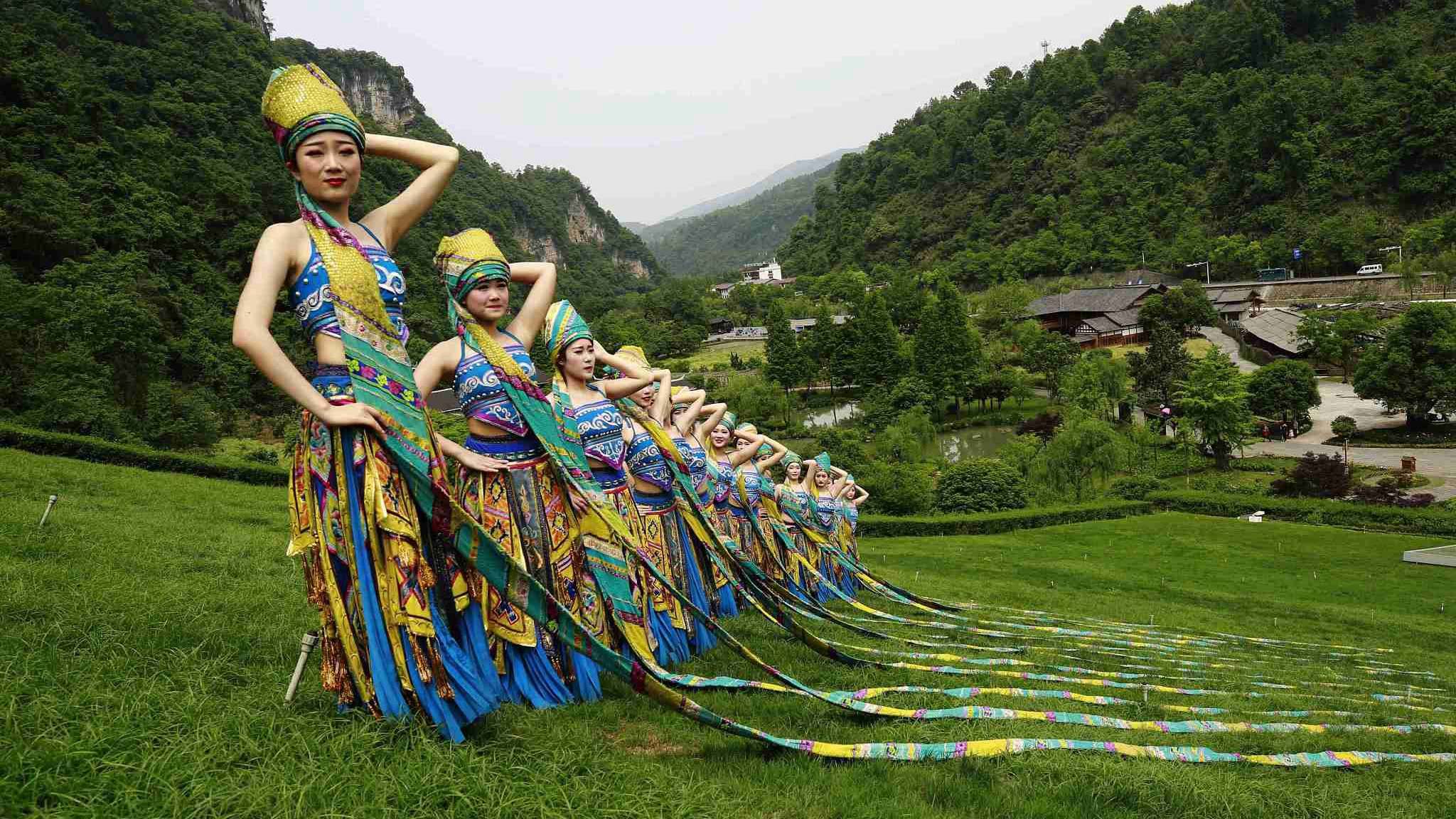
What is the Ethnicity of the People in Zhangjiajie?
While the majority of China's population is Han Chinese, China officially recognizes 55 ethnic minority groups with distinct cultures and languages. These groups are primarily concentrated in the mountainous regions of Southwest China, including the Wulingyuan area, which is home to Zhangjiajie National Forest Park. So what is the ethnicity of the people in Zhangjiajie?
There are three main ethnic minority groups in Zhangjiajie: Tujia, Bai, and Miao. These groups make up 77 percent of Zhangjiajie's total population, and many visitors count their festivals among the highlights of their visit.
Tujia People
The Tujia people are the largest of the three main ethnic groups in Zhangjiajie, making up around 70% of the city's population. They are one of China's largest ethnic minority groups, with a total population of around 8 million people. "Tujia" translates to "local family," which is a testament to their long history in the region. They have their own unique language, which belongs to the Tibeto-Burman family, but many also speak Mandarin Chinese.
The Tujia are known for their beautiful traditional clothing, which is often decorated with intricate embroidery. They are also known for their traditional stilt houses, which are built on wooden stilts to protect them from flooding and wild animals. Many Tujia continue to live in stilt houses today, and they are a popular tourist attraction.
| Aspect | Description |
|---|---|
| Population in Zhangjiajie | ~70% |
| Language | Tujia (Tibeto-Burman family), Mandarin Chinese |
| Traditional Clothing | Intricately embroidered garments |
| Traditional Housing | Stilt houses |
| Notable Traditions | Wushu martial arts, Baisha Xilong (folk dance) |
Bai People
While the Bai people are most closely associated with Dali in Yunnan province, they are also one of the three main ethnic minority groups in Zhangjiajie. The Bai people make up a much smaller percentage of the population in Zhangjiajie than the Tujia people, with only around 5% of the city's population. However, their culture is still visible in Zhangjiajie, and they have contributed to the city's rich cultural tapestry.
Like the Tujia people, the Bai people have their own language, which is also part of the Tibeto-Burman family. They are known for their beautiful architecture, which often features white walls and intricate wood carvings. They are also known for their delicious cuisine, which is known for its use of fresh ingredients and spicy flavors.
| Aspect | Description |
|---|---|
| Population in Zhangjiajie | ~5% |
| Language | Bai (Tibeto-Burman family), Mandarin Chinese |
| Traditional Clothing | Simple, elegant garments often in white, blue, or black. |
| Notable Traditions | Three Courses Tea ceremony, Torch Festival |
Miao People
The Miao people are one of the largest ethnic minority groups in China, with a total population of around 9 million people. In Zhangjiajie, they make up around 2% of the city's population. Like the Tujia and Bai people, the Miao people have their own language, but they are particularly renowned for their expertise in embroidery, which has been honed over centuries. They create intricate designs on their clothing, accessories, and even household items, and their skills are passed down through generations.
The Miao people are known for their beautiful silver jewelry, which is often worn during special occasions. The weight of the silver represents the family's wealth and status. They are also known for their traditional Lusheng music, which is played on a type of bamboo pipe instrument, and their intricate batik dyeing techniques.
| Aspect | Description |
|---|---|
| Population in Zhangjiajie | ~2% |
| Language | Hmong–Mien languages, Mandarin Chinese |
| Traditional Clothing | Elaborate silver headdresses and embroidered garments. |
| Notable Traditions | Lusheng music, batik dyeing, silversmithing |
Experiencing Ethnic Cultures in Zhangjiajie
These three ethnic groups have co-existed in Zhangjiajie for centuries, contributing to the area's unique cultural heritage. When visiting Zhangjiajie, visitors can learn more about these fascinating cultures by visiting local villages, experiencing their traditional food, and watching cultural performances.
FAQs
Q: What is the best time to visit Zhangjiajie to experience ethnic festivals?
A: Spring and autumn offer the most comfortable weather for exploring Zhangjiajie's natural beauty and experiencing cultural events. Check the dates for specific festivals like the Tujia's "Sheba Festival" or the Miao's "Lusheng Festival" as they vary each year.
Q: Are there opportunities to purchase authentic handicrafts made by these ethnic groups in Zhangjiajie?
A: Yes, Zhangjiajie is a great place to find authentic handicrafts like Tujia embroidery, Bai batik fabrics, and Miao silver jewelry. Be sure to buy from reputable shops or markets to ensure authenticity and support the local artisans.
Q: Is it respectful to photograph ethnic minorities in Zhangjiajie?
A: While the people of Zhangjiajie are generally welcoming, it's crucial to be respectful when taking photos. Always ask for permission before photographing individuals or groups. It's also a good idea to support local businesses if you're taking photos of shops or restaurants.